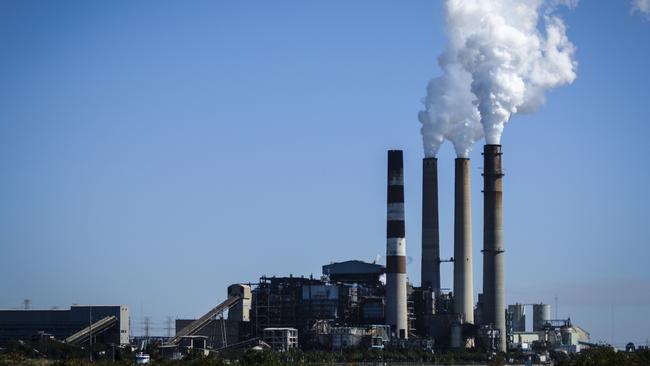ANZ’s annual report light on specifics about about targets for big-polluting sectors
Two in three of ANZ’s biggest emitting customers are advanced in plans to lower their carbon output, but the bank hasn’t laid out its sector targets for emissions reduction.

Almost two thirds of ANZ’s biggest emitting customers have well developed or advanced plans to lower their carbon output, but unlike several of its rivals, the bank has yet to outline a list of sector targets for emissions reduction.
ANZ on Thursday released its annual report and ESG supplement which said it had achieved 26 per cent of its ESG targets and had 37 per cent partially achieved or in progress.
On engagement with its 100 highest emitting customers, ANZ said 61 customers now had well developed or advanced plans compared with 42 in September 2021.
The bank is encouraging that group of customers to strengthen their low-carbon transition plans and boost efforts to protect biodiversity by the end of 2024.
ANZ admitted, though, that it had failed to engage on biodiversity with one of the 100 customers in the high-emitting group.
“We also recognise we can have the most impact by working with our customers to reduce their emissions. Our policy is to support customers through the transition, backing their plans by providing more finance for less emissions,” ANZ chairman Paul O’Sullivan said in the report.

“We have high expectations, particularly for our customers in the energy sector. We expect our energy customers’ plans to be net-zero aligned, public and specific.”
He shrugged off calls by some stakeholders for ANZ to stop lending to companies operating in carbon-intensive industries such as energy.
“This approach may reduce ANZ’s exposures or ‘financed emissions’. However, it does not reduce emissions in the real world if the company receives funding from an alternate source,” Mr O’Sullivan said.
In 2021, ANZ set emissions intensity pathways and targets for power generation and large-scale commercial real estate, and it plans to outline further targets – including for oil and gas, and building products – ahead of the year’s end.
The bank last month said portfolio emissions intensity in the commercial building sector continued to reduce while emissions intensity in power generation rose due to volatility in that industry.
ANZ’s 2022 climate-related financial disclosures will be released ahead of the bank’s 2022 annual general meeting in December.
That will mark ANZ’s sixth report using the Task-force on Climate-related Financial Disclosures’ recommendations.
Other banks have been more specific in targets for themselves and their customers.
Westpac in July provided targets for thermal coal, upstream oil and gas, power generation and cement, while Commonwealth Bank in August set sector-level targets across four priority industries for a reduction in financed emissions. Those sectors spanned power generation, upstream oil, upstream gas and thermal coal mining. CBA ruled out, however, an end date for financing new oil and gas projects.
Earlier this year, ANZ and its peers participated in the prudential regulator’s climate vulnerability assessment which gauged the potential impact of transition risks on mortgage and business lending portfolios.

The Australian Prudential Regulation Authority intends to release the results later this year.
ANZ’s ESG report showed it was ahead on a target to fund and facilitate $50bn in sustainable finance for customers by the end of 2025. In the past three years, the bank has facilitated $40bn.
On executive remuneration, the annual report showed ANZ’s chief executive, Shayne Elliott, had total pay of $5.49m for 2022 – relatively flat on the previous year’s $5.47m as his cash incentive dipped.
The next highest paid executive was finance chief Farhan Faruqui with annual remuneration of almost $2.9m, followed by institutional boss Mark Whelan at $2.81m.
The annual report included a section on information and data security, which among other things showed ANZ saw a 178 per cent surge in 2022 in the identification and removal of websites purporting to be the bank. But ANZ did not report any data breaches for 2022 to the Office of the Australian Information Commissioner under a notifiable breach scheme, compared with three the previous year.
The ESG supplement also covered the bank’s whistleblower program which received 142 reports for 2022, a drop of 10 per cent on 2021. ANZ said the reports covered a range of allegations including potential financial crime, fraud, conflicts of interest, sexual harassment and confidentiality breaches.



